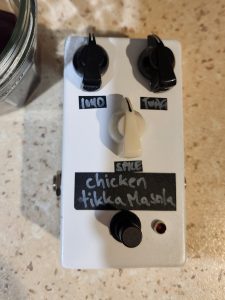 If you’re looking to get into making DIY guitar pedals, you’re probably wondering if it’s an expensive hobby. After all, guitar pedals made by major manufacturers can be 100’s of dollars, with pedals made by boutique builders can be even more…
If you’re looking to get into making DIY guitar pedals, you’re probably wondering if it’s an expensive hobby. After all, guitar pedals made by major manufacturers can be 100’s of dollars, with pedals made by boutique builders can be even more…
The short answer is no, making your own guitar pedals isn’t that expensive, especially when compared to buying them outright. However, like anything, there are costs.
DIY Guitar Pedal Start Up Costs
Before you can get started making DIY guitar pedals, there is a little bit of equipment that you’ll need. If you don’t have this equipment already, it’s probably the biggest single cost you’ll have with this hobby, and possibly the biggest barrier to entry.
I have a longer article on the gear you need to make guitar pedals, but in summary the more expensive items you’ll need include:
- A soldering iron: you don’t want to go too cheap here. If you end up really getting into it, you’ll end up growing out of your soldering iron quite quickly.
- Drill and drill bits to drill out enclosures: a lot of people already have a decent drill, but they may not have big enough bits for some of the components, these can be expensive.
- Multimeter: you can probably get away with not having one, but compared to the two items above, it’s relatively cheap.
- Solder: solder can actually be fairly expensive, but you can start with a smaller amount to save some money.
Take a look at my article on all the gear you need. Assuming you already have a drill, it’s really the soldering iron that’s going to be the big expense to get into this hobby. The soldering iron I used was about $50 USD – that’s not going to break the bank necessarily, but it’s also a bit of money.
How Much It Costs To Build A Guitar Pedal
This is one of those “how long is a piece of string questions. Obviously bigger and more complex builds are going to be more expensive. Also, you can build DIY guitar pedals with a PCB kit, which tends to be a little bit more expensive, or you can go even more DIY and build guitar pedals on stripboard. With stripboard, you really only have to pay for the parts and the enclosure, but it is a little bit more involved. If you’re unsure where to start, take a look at my article on whether to make guitar pedals with PCB kits or on stripboard.
All that being said, the cost breakdown is pretty easy to figure out.
The Cost Of Guitar Pedal PCB Kids
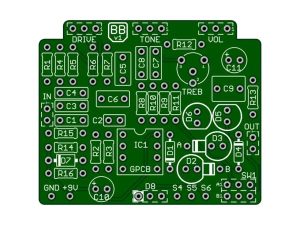 Pedal PCB is a good place to shop for a good range of DIY guitar pedal kits. You may have a better local supplier that will get you stuff faster and for less postage, but I’ll use their prices for a breakdown. All of this is broad of course so you can get an idea of what it costs to build your own guitar pedal, but a kit would break down to the PCB, parts, and an enclosure. The cost break down would be:
Pedal PCB is a good place to shop for a good range of DIY guitar pedal kits. You may have a better local supplier that will get you stuff faster and for less postage, but I’ll use their prices for a breakdown. All of this is broad of course so you can get an idea of what it costs to build your own guitar pedal, but a kit would break down to the PCB, parts, and an enclosure. The cost break down would be:
- PCB: $10 USD
- Parts: $20 USD (on the higher end)
- Enclosure: $7 USD
All together that’s $37 USD. You’d be hard pressed to spend more than about $40 or $50 to get a pedal built, even for more complicated builds.
The components may look like the most expensive part of the build and, while they can be, they’re pretty cheap. Often you’re paying less than 5 cents per resistor or capacitor, with transistors and integrated circuits being a couple of dollars. My estimate of $20 is actually pretty high, especially if you’re making a beginner DIY guitar pedal, which will have fewer components. Here you’re probably looking at $10 or so for all the components, including things like switches, jacks, etc.
The Cost Of Building A Guitar Pedal On Stripboard
Building a guitar pedal on stripboard is inherently less expensive. Taking my estimate above, all you need to do is remove the cost of the PCB (and add a bit for the cost of the stripboard). Even a bigger more complicated pedal with more components with likely be less than $30 USD.
Something super simple like a DIY ZVEX SHO, which is a great first time build, wouldn’t be more than $10 or so in parts. You’ll be building that for under $20.
So while it’s a bit less expensive than kits to build guitar pedals on stripboard, it’s a lot easier to get things wrong. You’ll then waste components and that costs money. It may be best to start with PCB kits and then move onto stripboard.
Buy Parts In Bulk To Keep Costs Down
A tip I (and many others) have is to buy in bulk to keep costs down.
When a single resistor only costs a few cents, shipping can often be more expensive than the component itself! Because of this, I usually buy the stuff I know I’ll be using in bulk. This is stuff like 1K and 10K resistors. I can get 50 of them for $5!
From there, I’ll usually order the parts for three or four builds all at once. Although I buy resistors and most capacitors in bulk, things like transistors and integrated circuits are a few dollars and I’d rather not buy them if I don’t know if I’ll need them.
From there, if I need to bulk out an order, I’ll get some footswitches and the like because I’ll also need them.
And don’t forget enclosures! Those are a bit expensive, so I’ll only buy them as I need them, but again, I’ll be ordering for three or four builds at once.
So Why Do Guitar Pedals Cost So Much In The Store?
After reading all of this, you’re probably wondering why store bought guitar pedals cost so much. After all, a big company like Boss or Ibanez is probably getting their costs down to no more than $20 USD a pedal (probably less). And the boutique builders are probably paying something similar.
For the bigger companies, well, they have overheads. There’s the actual cost of the pedal components, but there’s everything else that goes with it, including the machinery to build the pedal. My costing above doesn’t factor in time.
And that’s the same with the boutique pedals. Boutique pedals, which market themselves as handmade, need to factor in the time to actually build these things by hand. Sure, it may only be $20 in parts, but it may be an additional $100 in labour.
Add other costs of running a business and the costs add up, including the retailer of the pedal needing a cut of the profits, and you’re quickly getting into expensive territory.
For me, I make guitar pedals primarily because I enjoy it, but it’s also a great way to save some money while also getting some of the tones you want. If you’re doing it just to save money, it’s probably not worth the hassle though. You have to enjoy making the pedals as well.
Related posts:
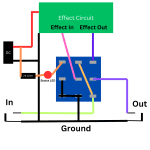 How To Wire A Guitar Pedal Foot Switch (3PDT)
How To Wire A Guitar Pedal Foot Switch (3PDT)
 Gear You Need To Make Guitar Pedals
Gear You Need To Make Guitar Pedals
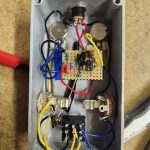 Big Guide To Debugging DIY Guitar Pedals
Big Guide To Debugging DIY Guitar Pedals
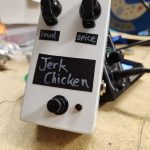 Why You Should Build Your Own Guitar Pedals
Why You Should Build Your Own Guitar Pedals
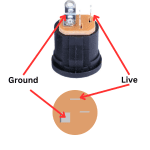 How To Wire A Guitar Pedal DC Power Jack
How To Wire A Guitar Pedal DC Power Jack
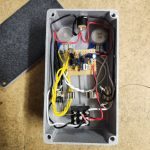 How To Wire Guitar Pedal Enclosures
How To Wire Guitar Pedal Enclosures
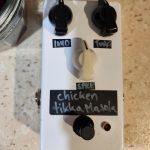 How Do Guitar Pedal (And Guitar) Volume Knobs Work?
How Do Guitar Pedal (And Guitar) Volume Knobs Work?
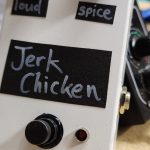 What Do Guitar Pedals Do?
What Do Guitar Pedals Do?
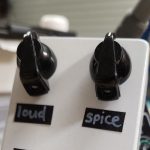 How Does A Drive, Gain, Or Distortion Knob Work?
How Does A Drive, Gain, Or Distortion Knob Work?
 What’s The Difference Between Overdrive, Distortion, And Fuzz?
What’s The Difference Between Overdrive, Distortion, And Fuzz?

